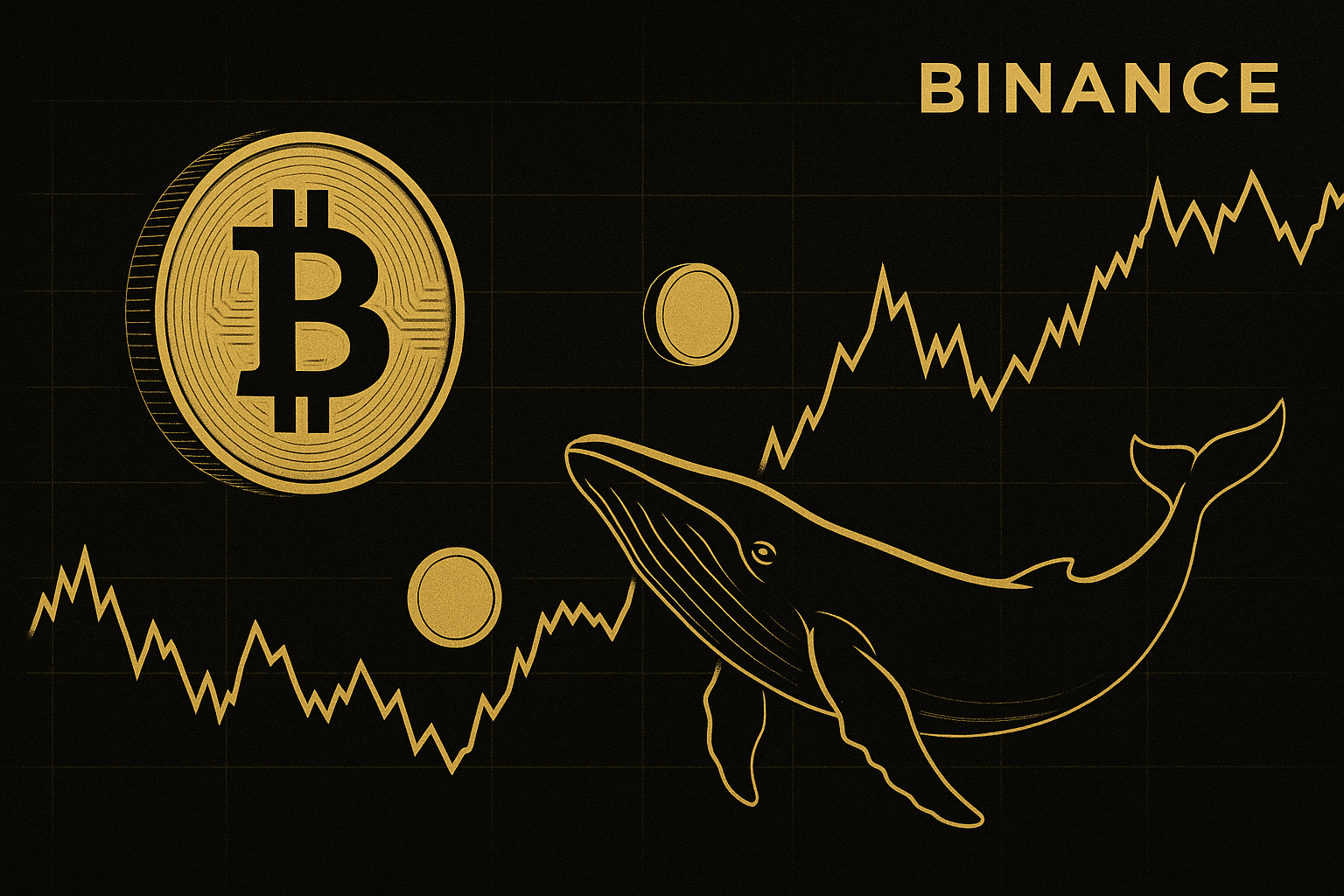While traders were sleeping and screens were finally cooling down after that manic Sunday candle, a weird calm floated over Bitcoin. Price was tip-toeing just under the psychological $110,000 line—$106,841 to be exact—barely 0.4% lower than yesterday. No fireworks on the chart, just low-volume chop that usually sends us doom-scrolling X (yeah, it’s still Twitter in my head) for clues.
Here’s What Actually Happened
Out of nowhere, a fresh CryptoQuant note from pseudonymous analyst “oinonen” dropped into the community Telegram feeds: Binance’s internal pipes were lighting up. Wallets pushing 10 to 100 BTC suddenly made up 40% of all Bitcoin inflows to the world’s busiest exchange. That’s the tier we affectionately call the ‘mid-squad’—too big for retail, too small to be a Michael Saylor cosplay.
The whales (100–1,000 BTC) still showed teeth, but they only commanded about 20% of flows at the same snapshot. So, for once, the middle class of crypto ruled the barcode scanner at Binance’s reception desk.
People Couldn’t Believe the Numbers
“It’s like the shark tank went half-vegan overnight,” joked @ChartDegen in our Discord. “I’ve never seen mid-caps throw this much weight around on Binance unless a listing rumor was brewing.”
I felt the same whiplash. Last year, when spot ETFs were still a daily meme, that flow table looked totally different. According to oinonen’s side notes, whale ratio on Binance has grown 400% since mid-2023. Yet on June 16, we saw a freak spike: a 10,000 BTC whale inflow that single-handedly made up 83% of deposits that day. Even so, the sustained trend right now is the surgeon-steady hum of those 10–100 BTC deposits.
Why the Mid-Squad Might Be Institutions in Disguise
Some folks shrug that a 10–100 BTC wallet is just a lucky 2013 miner cashing out. Could be, but multiple desks I follow disagree. Average deposit size on Binance is now 1.65 BTC, way up from 0.36 BTC in 2023. That screams “structured treasury allocation” more than “hardware-wallet-lost-in-a-drawer.”
Plus, Binance processed a ridiculous $21.6 billion in user deposits in 2024, practically double the next ten exchanges combined. If you’re a mid-sized fund that can’t get TradFi compliance to sign off on Coinbase Prime, you hold your nose and punt size on Binance.
The Community Split: Bullish Rotation or Exit Liquidity?
We threw the data into an impromptu X Spaces. Opinions, as always, were everywhere:
- @FrothyMcDCA: “Mid-tier wallets stepping in means distributed support. I’d rather see 50 medium whales than one giga whale steer the ship.”
- @nancy_not_larry: “Or it’s just OTC desks feeding exit liquidity before the next ETF outflow. Check Grayscale, folks.”
- @0xLarry: “June 16 spike tells me the big whales are staging again. Mid-tier flow is noise until we break $110k clean.”
I can’t pretend I’ve got the magic answer. What’s nagging me is that both camps could be right. We may be staring at the early stages of another leveraged chop cycle where institutions and alt-focused prop shops reposition without moving price—yet.
Now Here’s the Interesting Part: Historical Echoes
In late-2020, we saw a nearly identical mid-tier inflow bump on Coinbase just weeks before PayPal’s crypto rollout sent BTC vertical. Back then, 10–100 BTC wallets were quietly filling bags between $11k and $13k. We all know how that ended.
Before you slam the buy button, remember 2019. Mid-tier flows spiked during the plus-token Ponzi unwind, and price bled 50% in four weeks. Context matters: back then, stablecoin liquidity was a tenth of today and miners were about to halve rewards. Today, we’re post-Halving, hash rate just tagged an all-time high, and ETF flows flip red to green every other day.
What the Options Desk Is Whispering
I pinged an old colleague at QCP Capital. He couldn’t share trades, but mentioned that skew on 120k June expiries is creeping positive. Translation: someone’s paying a premium for upside optionality in the next two weeks. That lines up with mid-tier wallets moving coins onto Binance—maybe to hedge spot holdings by shorting futures (carry trade 101) or to preload for a breakout.
Why This Matters for Your Portfolio
If you’re all-in Bitcoin, float levels mean everything. We’re trapped between the 21-day EMA at $105,200 and that stubborn $110,000 ceiling. A surge in 10–100 BTC deposits can tighten order books, making any breakout sharper. On the flip side, it also supplies fresh inventory for market makers to short against, capping rallies.
I’m personally snug on my long-term cold storage, but I did roll some June calls up to 115k after seeing those deposit numbers. I’m basically betting that if mid-squad is rebalancing, they’ll either push price or cover quickly. Either way, volatility should pay the premium.
Stuff I’m Still Scratching My Head Over
• How does a 400% jump in whale ratio square with mid-tiers dominating inflows? Is Binance absorbing OTC blocks we don’t see?
• Are we underestimating Asian market hours? The June 16 whale spike hit right after the Hong Kong open.
• Will stricter Binance KYC rules—rumored for July—throttle these mid-tier flows?
No tidy answers yet. But if you’ve got theories, drop them in the comments or tag me on X (@coffeeNcrypto). The more brain cells, the better.
Bottom Line
Bitcoin’s price may look half-asleep under $110k, yet Binance’s conveyor belt is anything but. Mid-tier wallets, potentially funds flying under the regulatory radar, now own the lion’s share of exchange inflows, while the mega-whales lurk in the shadows and strike in single-day bursts. Historically, that cocktail precedes big moves—up or down. Keep alerts on, don’t over-leverage, and remember that the market loves to punish consensus.



